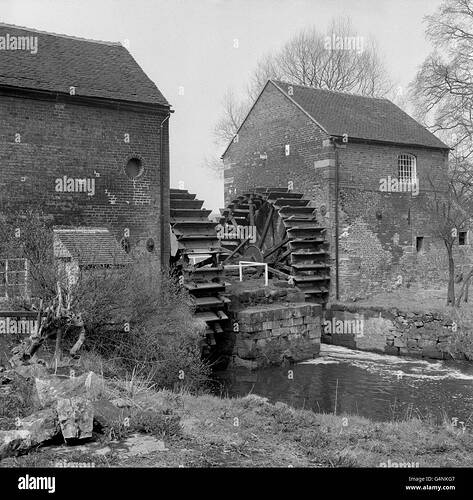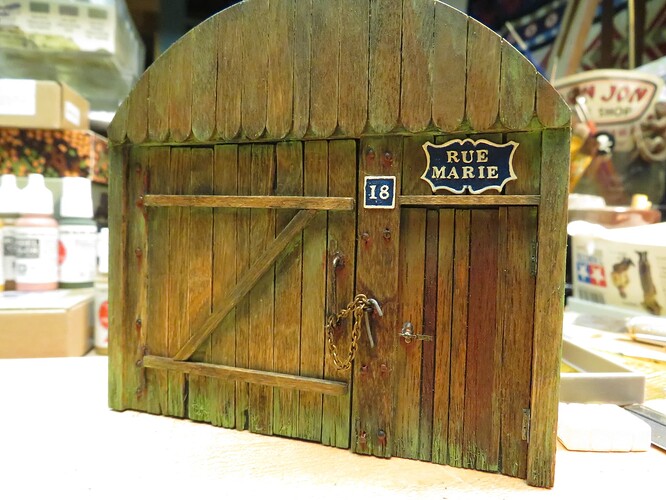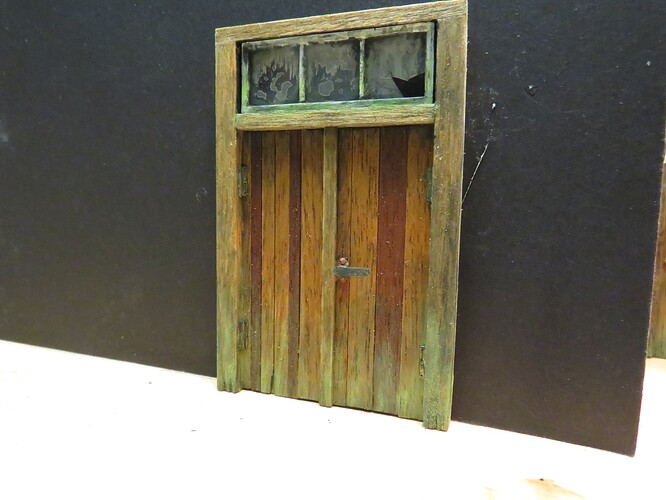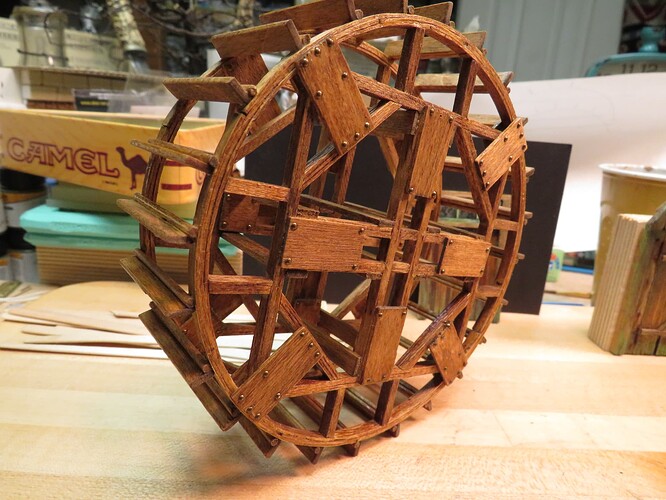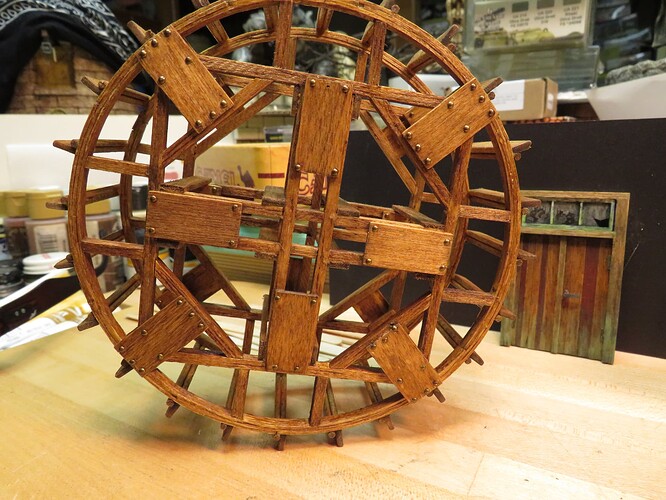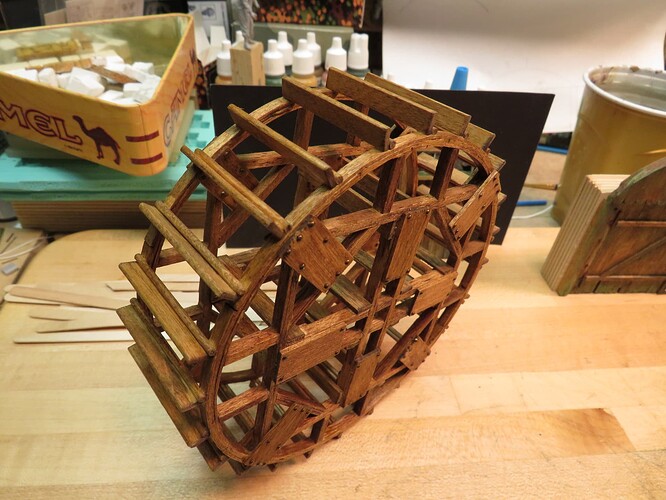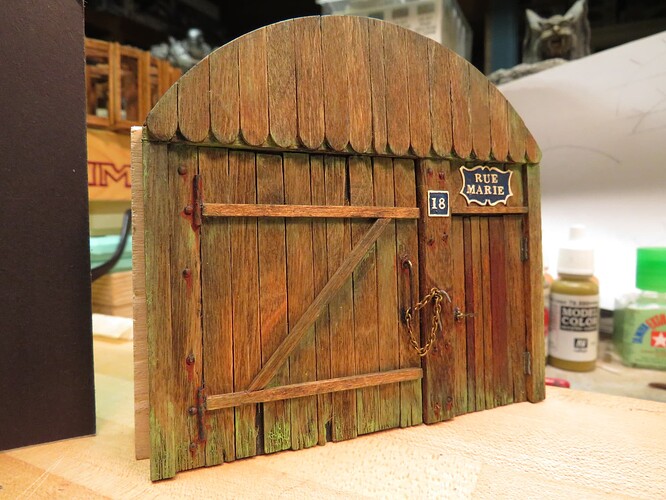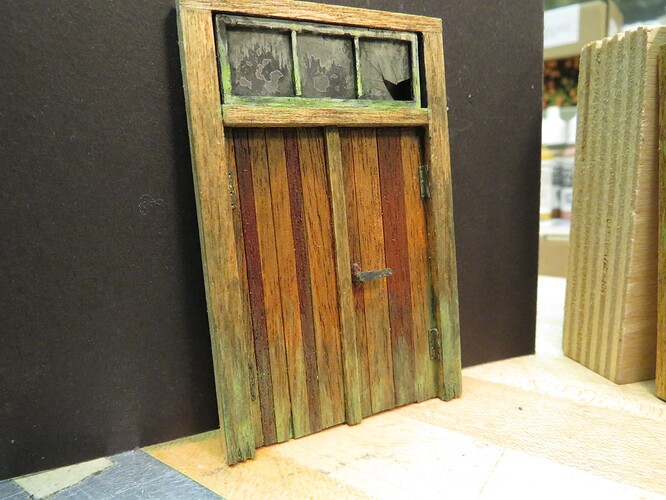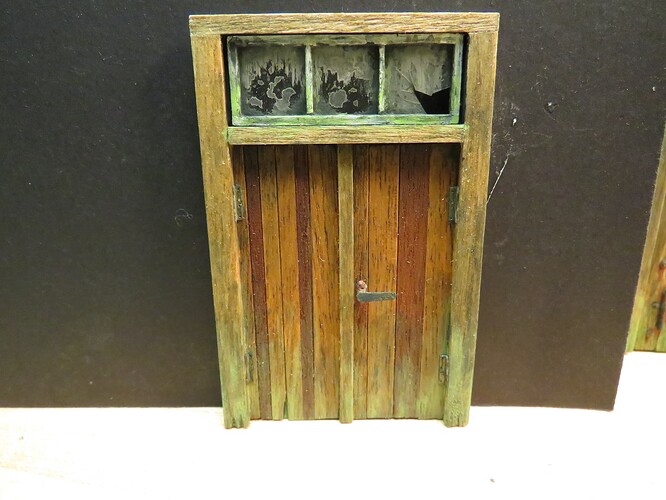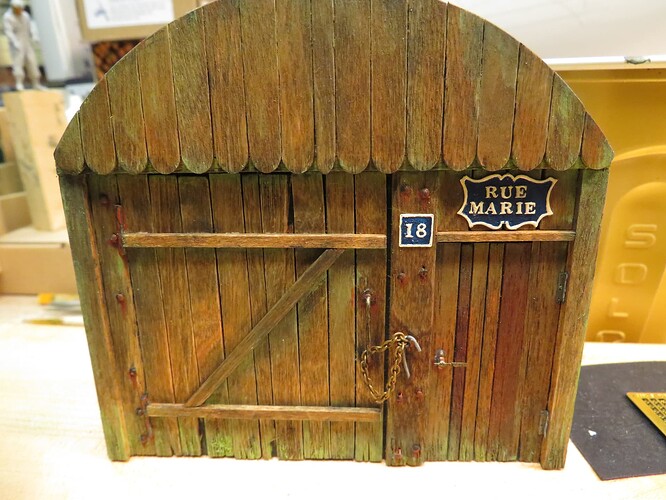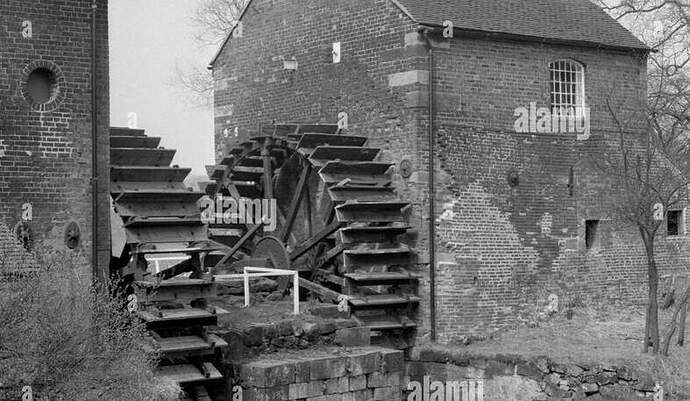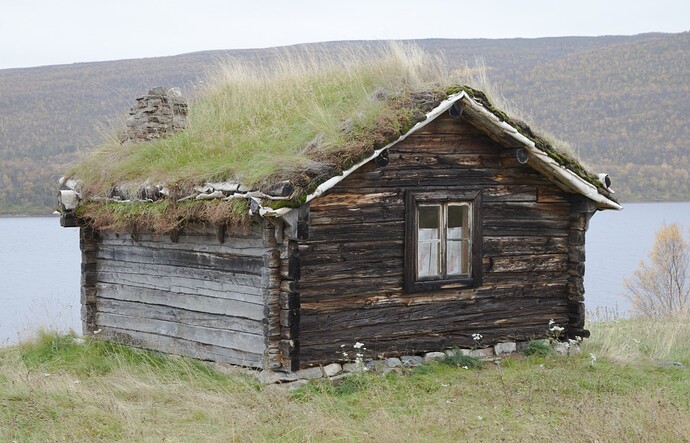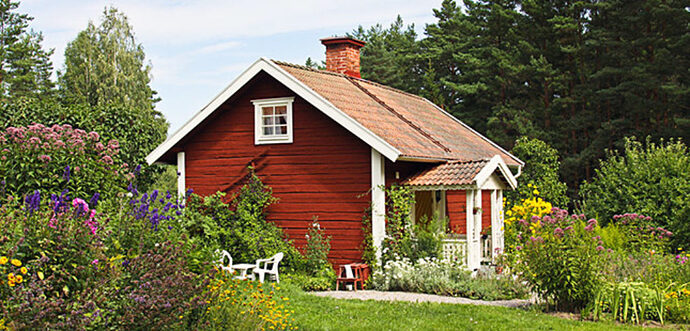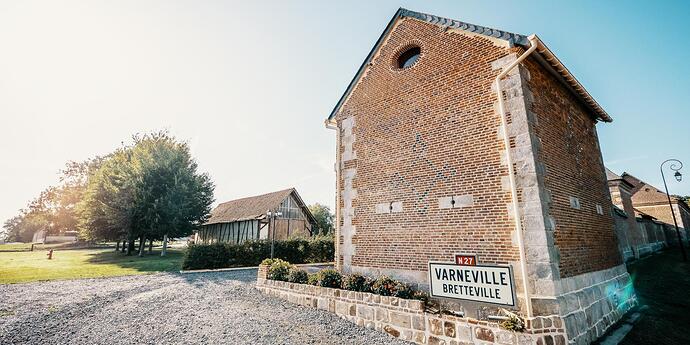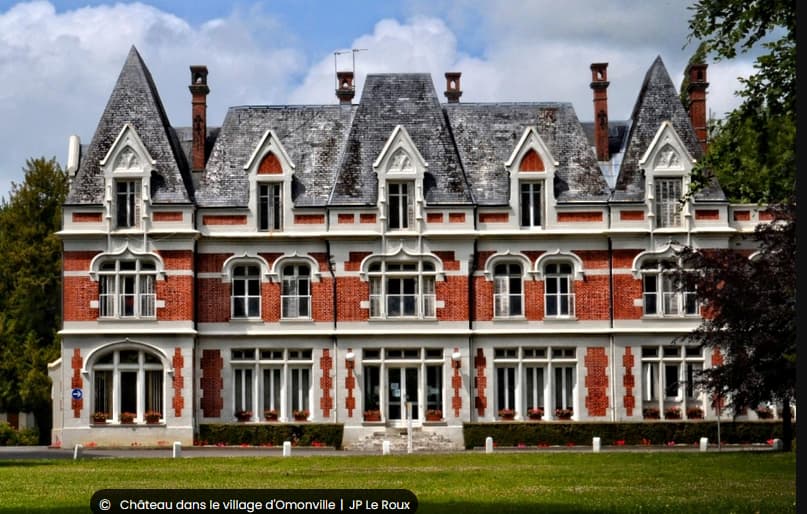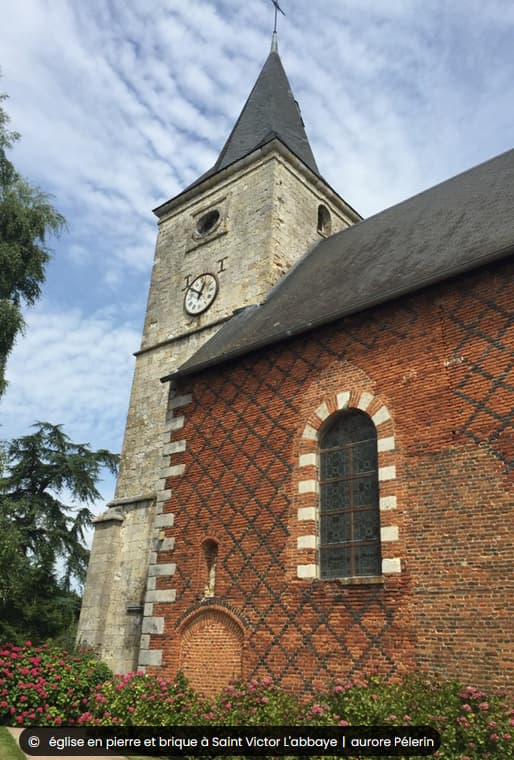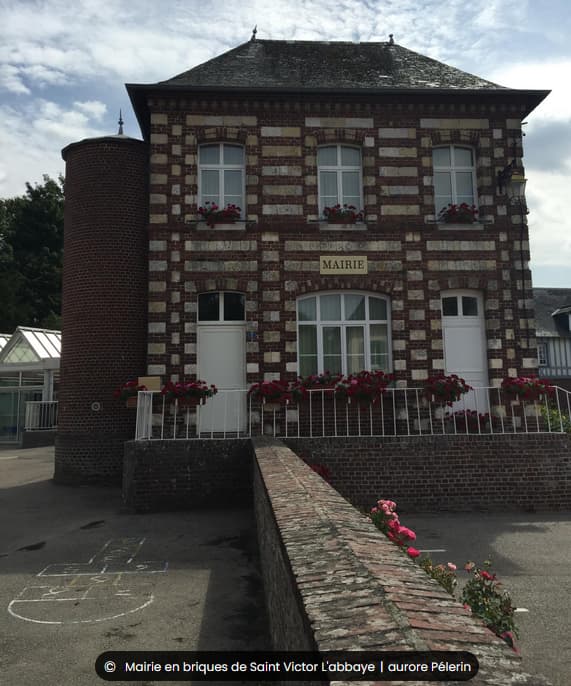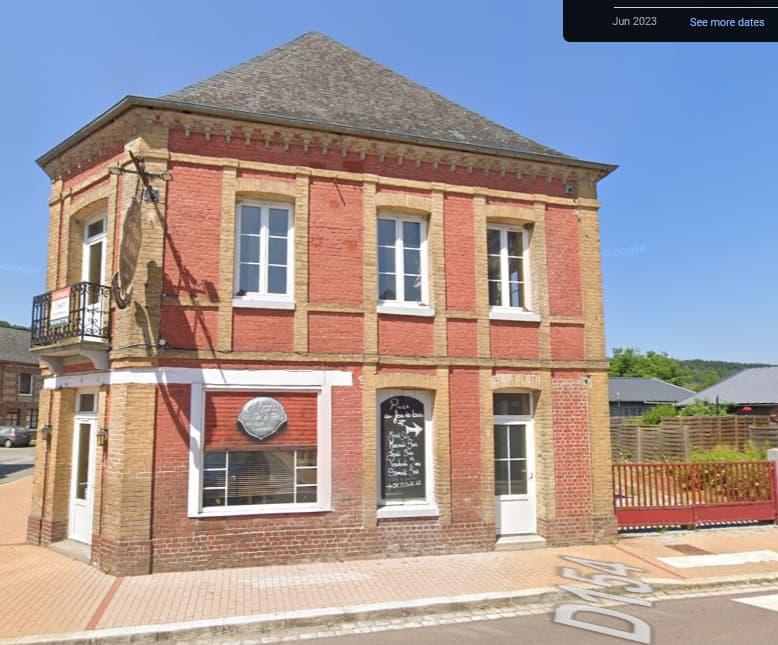Started by scratching a couple of doors .
Haven’t decided weather to use brick as in the ref pic or stone , I’m leaning on stone .
The water wheel I built a good while ago and I’ll have to make another , the first one all stained and ready for weathering .
Lots to do but I’ll have college and NFL football , which will give me plenty of bench time !!!
Annnd off to yet another great building…
You must eat popsicles by the dozen just to keep your stash of sticks filled! ![]()
Thanks Erwin .
Yeah , they’re dead ringers for popsicle sticks but are actually craft sticks sold in , … well , craft stores , a tad thinner than popsicle sticks .
I worked in a school system [ six schools , four grade schools , a junior high and a high school ] as a maintenance guy for eight years after I retired from Ma Bell .
One of the schools had a bad mold problem and had to shut down for six months . Every year after that all art departments threw out their wood stocks at the end of the school year cuz for some reason they thought over the Summer months they would get moldy from the humidity .
Soooooo every end of June I appropriated wood stuff from six schools before it went into the dumpster , man do I have a lumber yard !!! … and the craft sticks were part of that haul .
I do buy them separate too.
That was indeed a goldmine for the humble wood!!!
Never had you pegged as an environmentalist/recycler, whodathunkit? Whatever the woodwork’s off the scale, beautiful work. Are you using oils or acrylics?
The BW picture of the mill seems to show that the mill is a mix of old and newer brick. Was this thing destroyed in another conflict? Sure looks like it was.
Personally I’d go for the look of the original picture. But it’s going to require tons of fine brush time… but that’s just me…
Love the gate
Mortar between bricks is subjected to aging processes. When the mortar fails the brick falls.
Bricks will absorb water if they are exposed to water. If there are freezing temperatures when the bricks are moist it will eventually destroy them.
The areas near the water wheels and the ground show signs of damage.
I would say that natural causes have caused the damages.
It a good reason to do extra weathering around said areas…
Tim , I’m not , every Earth Day I ride around with my muffler off , flicking butts out the window looking for deer to hit . … just kidding , that’s from a Jim Carey HBO skit .
I stained everything with wood stain , Golden Oak , usually I wash everything with oils except on stain , washing with oils on oil based stains doesn’t work as good as when you use it on acrylics .
Sooooooooooooo , I washed and painted everything over the stain with acrylic colors .
Thanks Robert , or can I call you Rob , … I’m gonna call you Rob .
I’m leaning on stone , looks more like very old French architecture in stone .
The ref pic is of a very , very old flint mill in Staffordshire England on the Churnet river .
The ref pic is more of a guideline and inspiration than an exact replica build , I just like the idea of a double wheeled mill .
I’d say you’re correct Robin , like I stated its a very , very old flint mill .
Soooooo the natural aging process would apply .
Notice that even though the mill is primarily brick it appears to have re-mortared areas that suggest damage fixes over time and look at the corners , they’re sandstone or granite block or cultured stone which you usually don’t see on all brick structures . Not saying it’s not done but see how there are block/stone on the corners but also runs of brick interspersed between the stone/block corners .
All in all a very interesting building .
Flint mill ? As in flints for muskets?
You can call me anything you like except late for dinner. ![]() I’ll be watching the progress…
I’ll be watching the progress…
Make and extra wheel,then you could do a Capn’ Jack Sparrow dio😁
There are MANY brick buildings with some kind of natural stone on the corners.
Quoins:
https://en.wiktionary.org/wiki/quoin
The word itself is related to coin (the little metal pieces denoting a monetary value)
Seems to be a pet peeve (i.e. the fake quoins slapped on cheap masonry today) of an architect in Colorado:
A cornerstone is a different beast though, even if that concept also goes back to masonry.
It was so common in Europe that it created an architectural style in Sweden.
Poor Swedish farmer boys saw brick buildings when they travelled Europe during the wars in the 17th century. Red brick buildings with light coloured corners. How can we copy that?
Poor backward region on the fringe of European civilization had to make do with the available resources. Timber houses:
doesn’t really look like a fancy brick building from the richer parts of Europe.
So, what can a poor farmer do?
Paint it red (pigments were residue from copper mining, poisonous for the environment but the paint is durable and protects the wood) and slap some white paint on the corners, around windows and doors:
Looks good, at least from a distance if you squint a little …
Later on the rich Europeans started covering the brick with plaster and some built/covered the whole palace with sandstone. Swedish nobility also wanted sandstone mansions, the wannabees had to settle for yellowish paint …
There are lots of brick buildings who do NOT have these stone corners, there are also stone buildings where they have used bricks for the quoins …
I do believe that this is bricks with sandstone blocks sprinkled into the design but it could possibly be the other way around …
What’s that expression? Fake it till you make it?
Light coloured bricks used to fake sandstone quoins …
Have a look around in Torcy-Le-Grand in Normandy, bricks and designs all over the place, literally and figuratively:
Sabaton (Swedish heavy metal) sing about the 30-years war:
Those who survived had seen large parts of Europe …
Like I said , Not saying it’s not done but see how there are block/stone on the corners but also runs of brick interspersed between the stone/block corners .
The block/stone on the corners of the brick mill lead me to believe they were not used for aesthetic reasons . They may very well have been used as repairs to damage much the same as different looking brick and mortar on sections of the mill , or they just used what they had .
Could be the other way around.
Corners built with stones and then repaired with cheaper bricks.
I would assume that cutting (dressing?) natural stones costs more than making bricks.
There is a symmetry to the stones, marked with coloured dots:
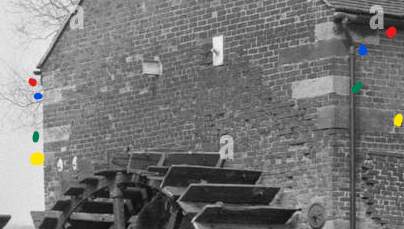
Dunno Rob , caption just read flint mill , could be for musket flints , the building is very , very old .
The building just doesn’t look " flintlock " old though .
Dunno that either , my assumptions don’t carry much weight because of the lack of history of the mill .
We only really need to think about the visual appearance and we can ignore the architectural history.
![]()
Just found some more intel on the mill , actually there are two mills on the Churnet river .
One a double water wheel and one a single wheel .
Rob , the flint mill was used to grind flint to add to clay or whatever for pottery .
The mill site itself goes back to the middle ages , so additions , upgrades , reconstruction and repairs are more than likely .
The mill in the photo is on the original site .
